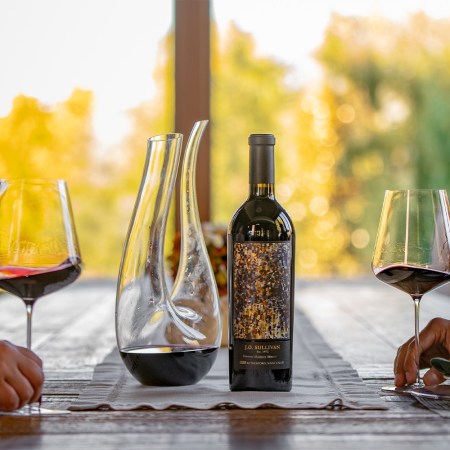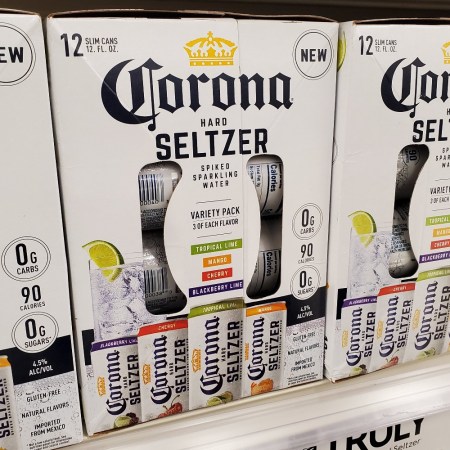Paint. Paint and rotten fruit.
These are the things you first smell when you put your nose to a shot of Kanggye Sul, a North Korean brandy that is almost exactly as bad as it sounds.
The bottle arrived care of my friend Joe, who served as an army captain in the demilitarized zone that separates North and South Korea. He had seen it in the front of an old ammunitions case in a “friendship” gift shop, where it was displayed proudly among a bullet bag, rifle bullets and two shot glasses made from 40-millimeter grenade shell casings.
“We had to dress it up somehow,” Joe said, laughing.
This village, Panmunjom, is about the closest you can get to North Korea without actually crossing the border. There are underground incursion tunnels created by the North Koreans to surreptitiously mobilize divisions of soldiers and blue buildings where the two neighboring countries occasionally meet to practice diplomacy.
Joe’s American battalion was there for a VIP tour.
Kanggye Sul’s name come from two things. First: Kanggye, a city in North Korea that acts as the provincial capital of the Chagang province. According to the Federation of American Scientists, Kanggye is home to “Kanggye No. 26 General Plant,” the largest underground missile facility in the country, where more than 20,000 workers labor away on a variety of rockets, bombs and other objects of destruction. Because of this — and its advantageous topography in the north of the country — Kanggye has been an important military post in Korea since as early as the 1300s.
Sul is the general Korean term for alcohol. According to Korea.net, the website run by the Korean Culture and Information Service:
“Sul implies a culture, a sharing between friends, whereas the English ‘alcohol’ can be somewhat scientific or cold, or even damning. ‘A pint,’ in the British sense, carries the same friendliness and warmth that sul does, or perhaps the Australian ‘stubby.’ Sul implies the artistry and care of a Portland craft beer, the hands-on approach of a Tennessee boutique distillery, the aged vines of a Burgundy terroir and the tradition of a Highlands malt.”
“The nose is the best part of this. It goes downhill from here,” Joe said, forebodingly.
The first sniff yields paint or, if you’re being generous, vinegar. It’s not overpowering, but it isn’t pleasant. Subtle hints of grape were in there somewhere, but they certainly weren’t at the fore. There was still hope, though. I’ve smelled plenty of rank food and drink that, upon consumption, proved divine. I steeled myself for the first sip.
“Here’s to doing what most people never will,” Joe said, adding, “… or want to.”
We toasted and turned our glasses toward the sky.
It’s hard to say if Kanggye Sul is an acquired taste or just bad. When most people try IPAs for the first time, they’re not exactly over the moon. Bitter flavors tend to take some warming up to, and I reminded myself of that as I drank.
Kanggye Sul isn’t bitter, though. There’s a flatness to it reminiscent of saké or soju — think watery with flavor. The first sip doesn’t offer much, while the second gives way to a sweetness that approaches rotten fruit. Combine this with a flat, almost oily mouthfeel, and you get a mostly unsettling drinking experience from the get-go.
The sul didn’t burn until I swallowed. What was placid erupted into something akin to heartburn on the way down. This wasn’t the sweet burn of a high-quality rye, but rather, the kind that usually attends eating too many acidic foods in one sitting. And it lingered.
“It’s the kind of stuff that doesn’t seem like much, but will probably wreck you the next day if you have enough of it,” Joe said, pouring a second round.
I nodded in agreement. The smoothness was beguiling for a spirit boasting an ABV of 60, and made me wonder if there were additives. With no way to tell — the bottle gave away no secrets and internet searches turned up, well, nothing — we poured another shot. Pounding sul could get dangerous, I decided, but maybe that was the point.
“Imagine working your ass off for however long a day, and going to a hovel with no heat, minimal food, and then there’s this,” Joe said.
And it was then that I began to understood the appeal of sul. It’s not a drink for comparing notes and ruminating on subtleties of taste and bouquet — it’s a palliative against long days spent working on missiles in an underground weapons facility. Not good enough to become addicted, but good enough to lend a man a few hours of peace before the onset of a killer hangover. By the end of the third shot, it was still oily in my mouth and the taste of rotten fruit had not subsided.
But it wasn’t burning anymore.
This article was featured in the InsideHook newsletter. Sign up now.





















